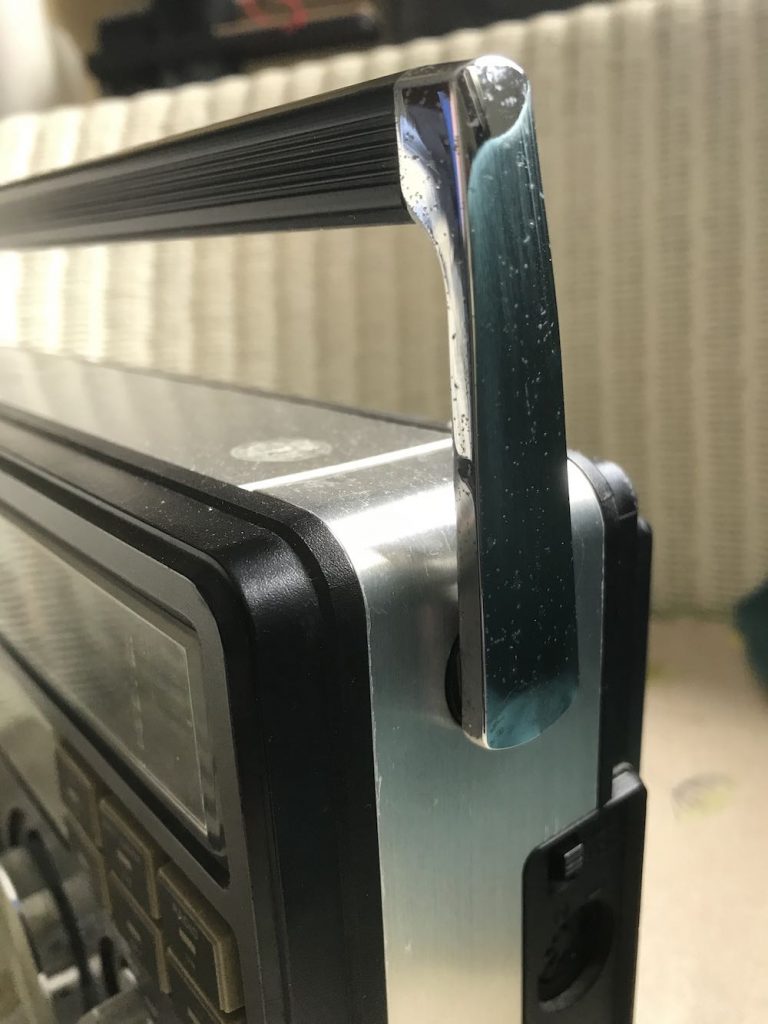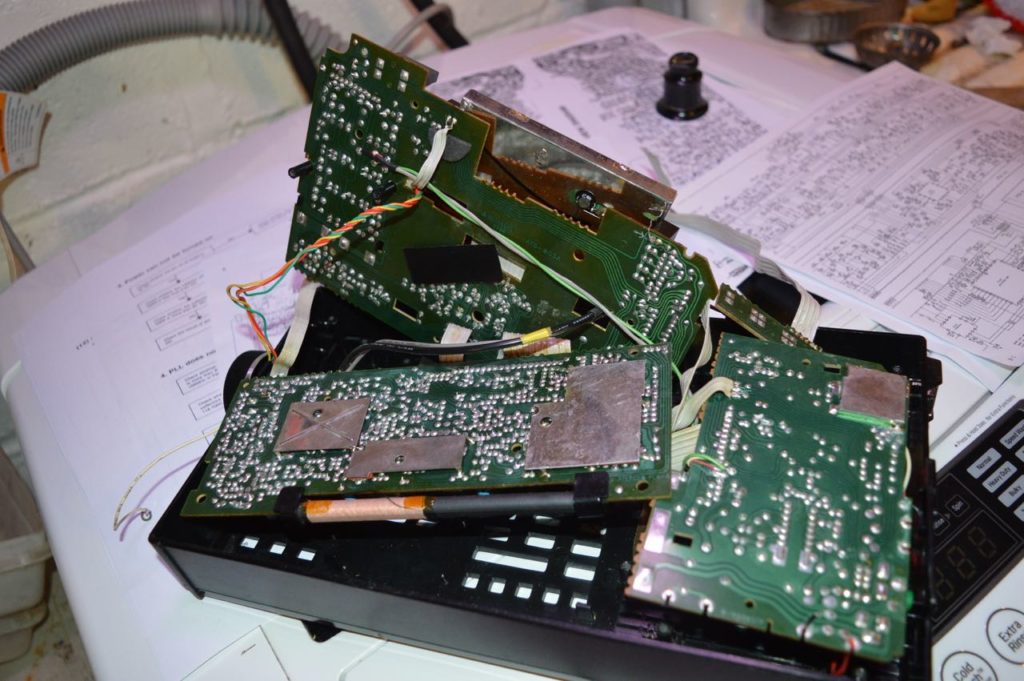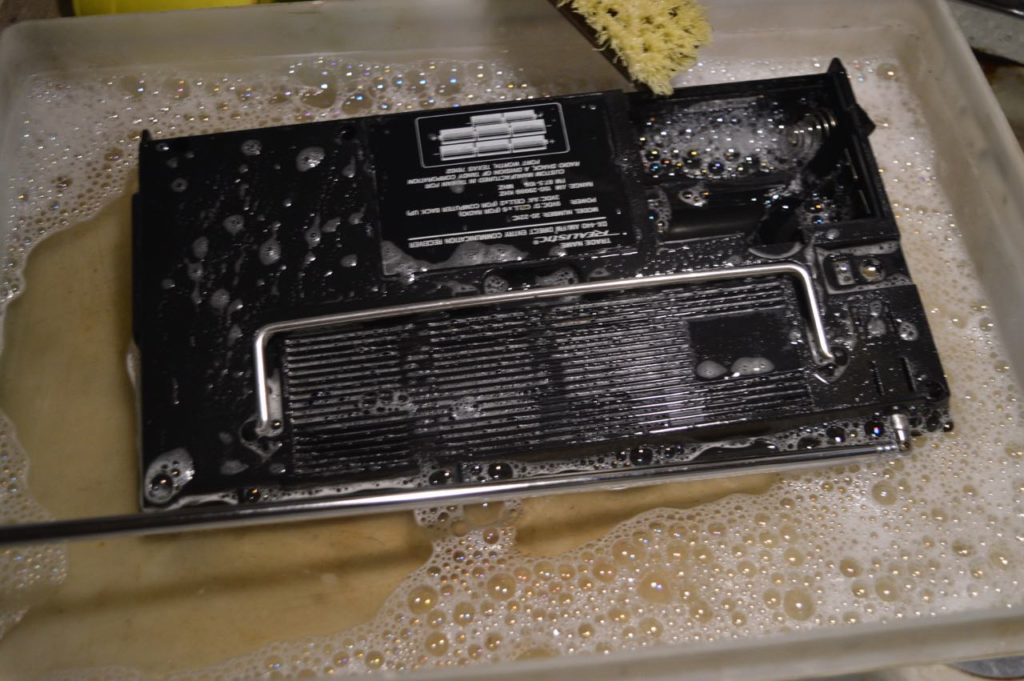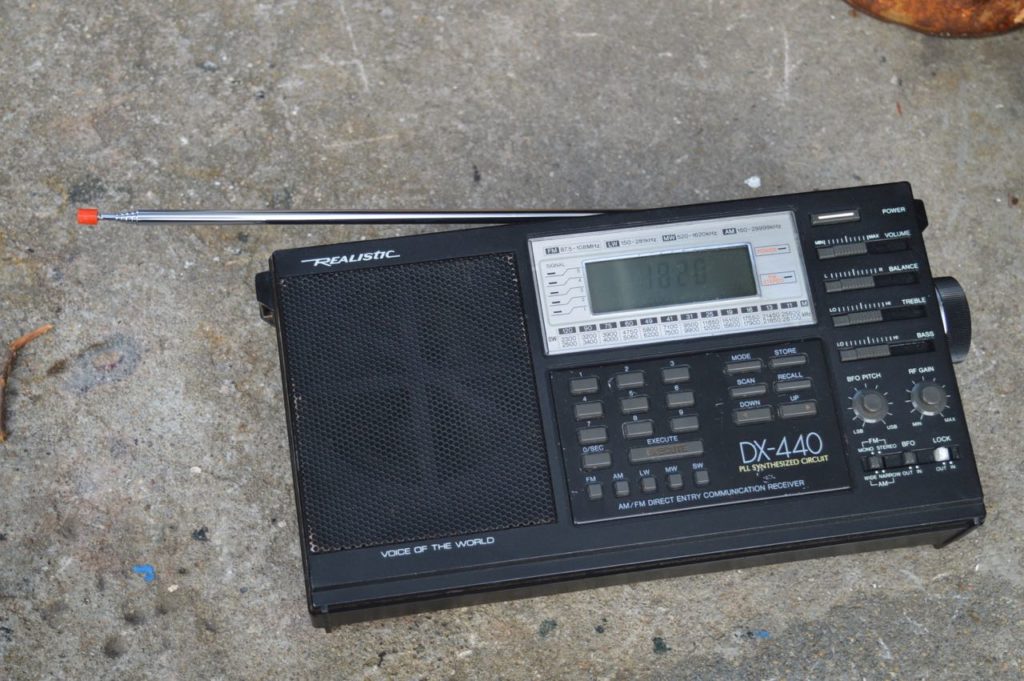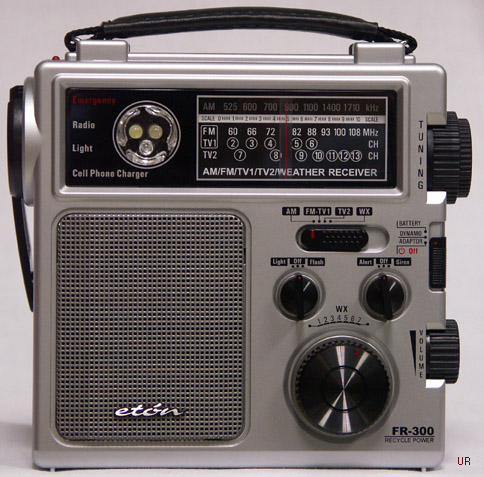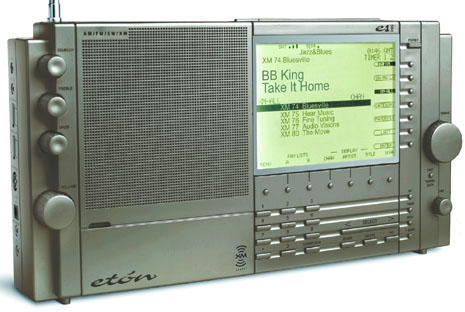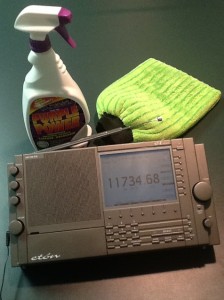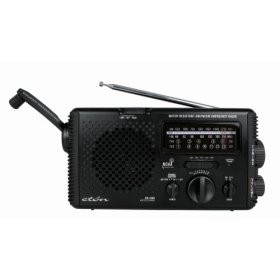Many thanks to SWLing Post contributor, Mark Hirst, who writes:
Going to a local UK charity shop will usually turn up a grim selection of romance novels, old DVD box sets and children’s toys. They do a brisk trade in clothing, shoes and bags, but technology often consists of dire examples of cheap DVD players, phone cases, and small TVs.
It’s those very occasional gems that keep me going back.
Last Sunday a Panasonic radio turned up, and being a canny eBay savvy charity, they put a proper price tag on it! Aside from a scratchy volume control which was easily sorted, it seems to work fine. Spanning the whole of shortwave on a single band selection makes for tricky use of the big tuning knob, but back in the eighties I suspect this wasn’t a problem.
Finger marks and general grime have cleaned up fine, but the handle is strangely marked, and after fruitless cleaning with cotton pads and a little water I’m wondering if this is some kind of oxidation below the shiny surface.
I’m wondering if other readers are familiar with this kind of problem?
What a great score at the thrift store, Mark! I have several receivers of the same era that have the same issue on their chrome/metal parts. It’s almost as if the chrome/metallic finish is pitted in some way.
Readers: Do you know how Mark could safely clean the marks off of the chrome finish on the handle of his RF-1405?
FYI, here’s a video of Mark’s RF-1405 tuned to CRI:
Mark, you certainly snagged a great radio at the thrift store!


